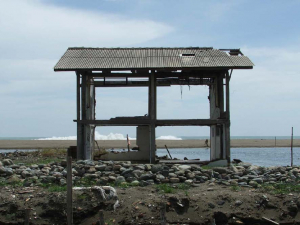Timmins Provides Testimony on Environmental Justice at USCCR

Professor Christopher Timmins presented on the economics of environmental justice at a briefing of the U.S. Commission on Civil Rights (USCCR) in Washington, D.C. earlier this month.
USCCR is an independent, bipartisan agency that advises the president and Congress on civil rights matters. Its 2016 enforcement report, to be released later this year, will examine whether the Environmental Protection Agency (EPA) is complying with its environmental justice obligations to ensure that environmental damage is not disproportionately off-loaded onto low-income or minority neighborhoods.
Since 1994, EPA has been tasked with incorporating environmental justice into its mission in accordance with Title VI of the Civil Rights Act of 1964, which mandates that all federal programs and activities that affect human health or the environment do not discriminate based on race, color, or national origin.
The commission is considering the impacts of toxic materials on low-income and minority communities, with a focus on coal ash, a residual by-product generated by coal-fired power plants.
“Too often our nation’s communities of color bear the brunt of toxic substances generated by nearby plants and processes,” said USCCR Chairman Martin R. Castro in a press release. “We intend to shine a light on the civil rights implications of toxic coal ash, as well as other environmental conditions, on communities most in need of protection.”
Some critics of using Title VI to address environmental justice argue that the distribution of pollution can be explained by market forces and are therefore based on income, not race. But, according to Timmins, the question to ask when analyzing these market forces is which came first in a particular location: the pollution or the minority population?
Among the four panelists speaking specifically on environmental justice, Timmins’ testimony provided two economics-based explanations, siting and sorting, for the existence of environmental inequities.
“In order to devise policies to address environmental injustice, I would argue that simply identifying whether such inequities exist is not sufficient; we need to know their origins,” said Timmins, whose research focuses on natural resource and environmental economics.
Siting is the decision-making process that explains why facilities such as landfills and coal ash impoundment sites are located or placed in certain neighborhoods. In an optimal scenario, communities that host a pollution source should be appropriately compensated for any nuisance they bear as a result, according to the Coase theorem of bargaining. Poor neighborhoods are an attractive destination for siting nuisances, because low-income residents are more likely to accept exposure to pollution in exchange for lower cost of living. Timmins noted that other factors may come into play when poor neighborhoods take part in a Coasian bargaining, leading to inefficient and inequitable outcomes. For example, disadvantaged groups may not be fully informed of the dangers they face because of a language barrier or perhaps lack the “impetus or capacity for collective action.”
The theory of sorting — specifically, the idea of "voting with one's feet," described by Charles Tiebout — is the relocation of individuals from one community to another in response to an environmental harm. Disproportionate pollution exposure could arise after siting as a result of individuals’ income-constrained residential decisions. “Diminishing marginal utility of income again plays an important role, as low-income individuals may seek out more polluted neighborhoods with lower-cost housing in order to save for consumption of other necessities,” Timmins said.
Siting and sorting require very different policy responses, but Timmins said they share a common driver: income inequality. “Unfortunately, solving problems of environmental inequity may require dealing with this difficult, underlying socioeconomic problem first.”




